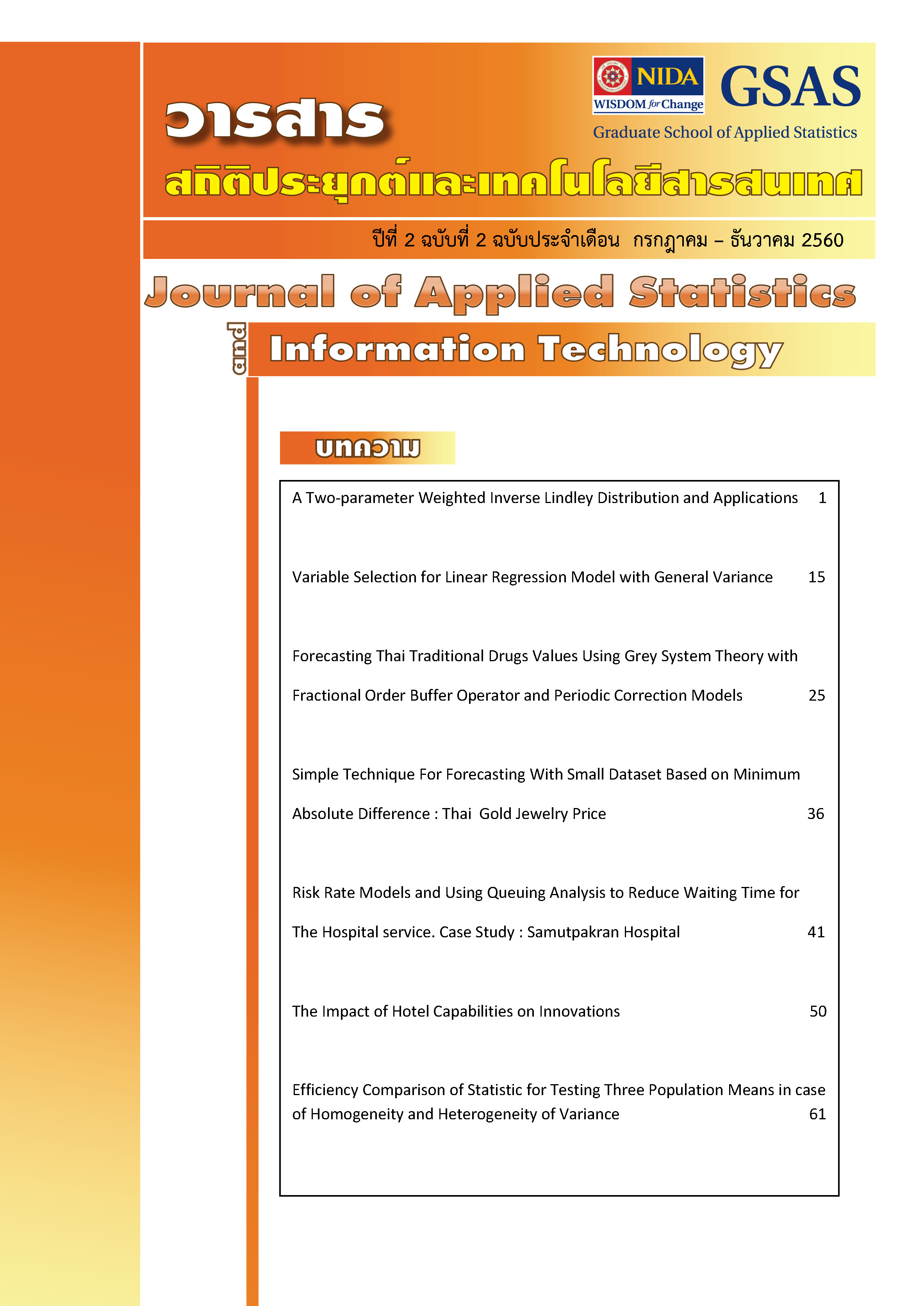Risk Rate Models and Using Queuing Analysis to Reduce Waiting Time for The Hospital Service. CaseStudy: Samutpakran Hospital
Keywords:
hospital service, Risk Rate model, Log-linear modelAbstract
The growing population has led to increase in waiting time and overcrowding in the
hospital service, A Risk Rate model has been developed to analyze the time series of count
data. In finding a Risk Rate model, parameters are estimated and goodness-of-fit is utilized to
carefully extract the best model to fit the count data. The marginal effect is the basis function
which can be used in the Risk Rate model. This study attempted to analyze actual operations
of a hospital and proposed modifications in the system to reduce waiting times for the
patients, which should lead to an improved view of the quality of service provided. To
develop a Risk Rate Models for the above situation, we need to define a model for the
expected number of patients for hospital services cases. Here, two underlying variables are of
interest, “waiting time” and “hospital services”. Since “waiting time” has been categorized
seven groups. The variable “hospital services” which contains four categorizes (No welfare
(NW), Reimbursement to employer (RE), Social Security Service (SS) and 30 baht for
welfare health service (30W)). As a result, significant levels of causal variables are not
expected to be identical for each model. We find that30 baht for welfare health service (30W)
category has a higher rate of increase in the average waiting time. The marginal effect is a
basis function that can be used in the Risk Rate analysis for. It allows into arrive at better
predictions of hospital service and rehabilitation decision making
References
CA: Academic Press.
[2] Green, L.V. and Nguyen, V. (2001). Strategies for cutting hospital beds: the impact on patient service.
Health Services, 36:421-442.
[3] Charles, M. and McFadden, D. (1981), Structural Analysis of Discrete Data with Econometric
Applications, Editors Cambridge: The MIT Press, 1981
[4] McCullagh, P. and J. A. Nelder (1989), Generalized Linear Models, 2nd edition. New York:
Chapman and Hall.
[5] TuijaLindqvist. (2001). Quality Management in Social Welfare and Health care for; National
Recommendation.Gabor Horvath; Approximate WaitingTime Analysis of Priority Queues,
ISBN 951-33-0930-4.
[6] Heien, H.C., Baumann, W.A., and Rahman, M. (2004). Inference in Log-Rate Models.
Journal of Undergraduate Research.2004; 4. Available from:
www.mnsu.edu/research/URC/OnlinePublications/URC2003OnlinePublication/ Heien_Baumann.doc.
Downloads
Published
How to Cite
Issue
Section
License
เนื้อหาและข้อมูลที่ปรากฏในบทความที่ตีพิมพ์ในวารสารสถิติประยุกต์และเทคโนโลยีสารสนเทศถือเป็นความคิดเห็นส่วนบุคคลของผู้เขียนแต่ละท่าน ความผิดพลาดของข้อความและผลที่อาจเกิดจากนำข้อความเหล่านั้นไปใช้ผู้เขียนบทความจะเป็นผู้รับผิดชอบแต่เพียงผู้เดียว บทความ ข้อมูล เนื้อหา รูปภาพ ฯลฯ ที่ได้รับการตีพิมพ์ในวารสารถือเป็นลิขสิทธิ์ของวารสาร หากบุคคลหรือหน่วยงานใดต้องการนำทั้งหมดหรือส่วนหนึ่งส่วนใดไปเผยแพร่ต่อหรือเพื่อกระทำการใดๆ จะต้องได้รับอนุญาตเป็นลายลักอักษรณ์จากวารสาร ก่อนเท่านั้น



